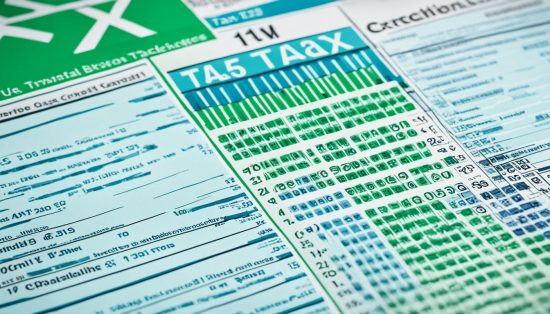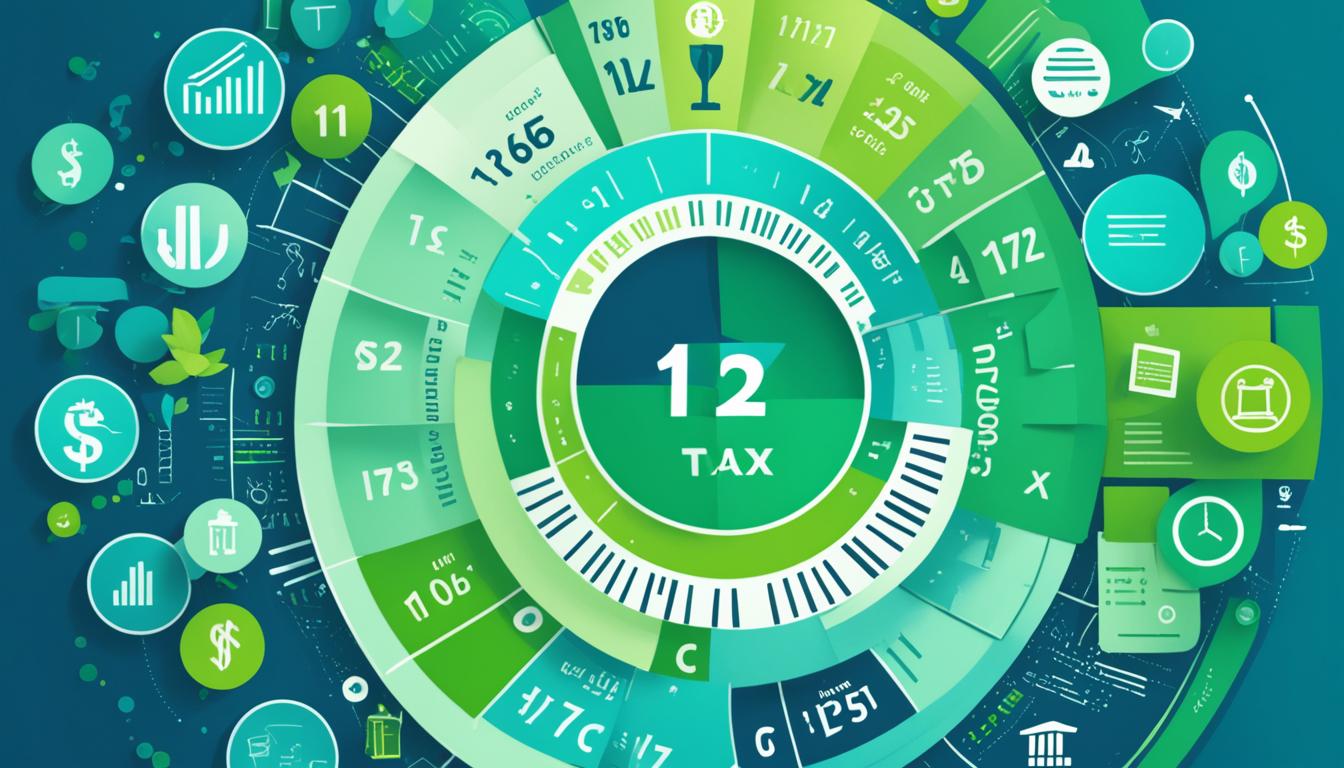Welcome to our comprehensive guide on the 1257L W1M1 tax code in the UK. If you’re looking for information on income tax, tax allowances, tax code lookup, HMRC tax codes, tax refunds, tax bands, and tax code explanations, you’ve come to the right place!
Understanding the 1257L W1M1 tax code is crucial for individuals who have one job and no untaxed income, unpaid tax, or taxable benefits. This tax code is used to calculate the amount of tax that should be deducted from your pay throughout the tax year.
In this guide, we will delve into what the 1257L W1M1 tax code means, how it works, who is eligible for it, and why you may have been assigned this tax code. We will also explore the benefits of having a 1257L W1M1 tax code and provide information on how to check and update your tax code.
To provide you with a comprehensive understanding of the 1257L W1M1 tax code, we’ll break down each section and provide you with the necessary information to navigate the world of income tax in the UK.
So, let’s get started and unravel the mysteries of the 1257L W1M1 tax code!
What is the 1257L W1M1 Tax Code?
The 1257L W1M1 tax code is a widely used tax code in the UK that consists of the numbers “1257” and the letters “L” and “W1M1”. Let’s break it down to understand its meaning.
The numbers “1257” in the tax code represent the tax-free allowance for the specific tax year. In the case of the 1257L W1M1 tax code, the tax-free allowance is £12,570. This means that individuals with this tax code can earn up to £12,570 without having to pay any income tax.
The letter “L” in the tax code indicates that the tax-free allowance is being applied evenly throughout the year. This ensures that the tax liability is distributed evenly across the pay periods.
The letters “W1M1” in the tax code signify that it is an emergency tax code. This code is used if a new employee does not have a P45, which is a form that contains important tax information from their previous employer. The emergency tax code is a temporary measure that allows the employer to calculate the employee’s tax deduction until the necessary information is available.
The 1257L W1M1 tax code is commonly assigned to individuals who have one job and no untaxed income, unpaid tax, or taxable benefits. It helps to determine the correct amount of income tax that should be deducted from their pay throughout the year.
To get a better understanding of the 1257L W1M1 tax code, refer to the table below:
| Tax Code | Tax-Free Allowance | Allocation | Tax Code Type |
|---|---|---|---|
| 1257L W1M1 | £12,570 | Evenly throughout the year | Emergency |

By understanding the components and meaning of the 1257L W1M1 tax code, individuals can have a clearer grasp of how it affects their income tax calculation and deductions. It is important to note that tax codes may vary based on individual circumstances, so it is always advisable to consult with HM Revenue and Customs (HMRC) or a tax professional for personalized guidance.
How Does the 1257L W1M1 Tax Code Work?
The 1257L W1M1 tax code is designed to calculate the exact amount of income tax that should be deducted from an employee’s pay based on their specific circumstances. Here’s how it works:
1. Determination of Tax-Free Allowance
The tax code takes into account the tax-free allowance for the tax year, which is currently set at £12,570. This allowance represents the amount of income an individual can earn before they start paying income tax.
2. Application of Tax Bands
Once the tax-free allowance is deducted from the individual’s earnings, the remaining income is then subject to the standard income tax bands and rates. These bands determine the percentage of tax that should be applied based on different income thresholds.
3. Inclusion of Deductions and Tax Relief
The 1257L W1M1 tax code also considers any deductions or tax relief that an individual may be eligible for. Deductions are expenses that can be subtracted from the individual’s income, reducing the taxable amount. Tax relief, on the other hand, allows individuals to claim back a portion of the tax paid on certain expenses or contributions.
By taking all these factors into account, the 1257L W1M1 tax code ensures that the correct amount of tax is withheld throughout the year. This helps individuals avoid underpayment or overpayment of tax and ensures accurate calculations of their income tax liabilities.
To help visualize how the 1257L W1M1 tax code works, here’s an example:
| Annual Earnings | Tax-Free Allowance (1257L) | Remaining Taxable Income | Income Tax (Calculated Using Tax Bands) |
|---|---|---|---|
| £25,000 | £12,570 | £12,430 | £2,486 (20% of £12,430) |
In this example, an individual with annual earnings of £25,000 would have a tax-free allowance of £12,570. The remaining taxable income is £12,430, which falls within the basic rate tax band (20%). Therefore, the individual would be liable to pay £2,486 in income tax.
Understanding how the 1257L W1M1 tax code works is essential for employees to ensure that the correct amount of tax is deducted from their pay. It is advisable to regularly review and update personal details with HM Revenue and Customs (HMRC) or their employer to ensure that the tax code accurately reflects their circumstances and obligations.

Who is Eligible for the 1257L W1M1 Tax Code?
The 1257L W1M1 tax code is applicable to individuals who have one job and no untaxed income, unpaid tax, or taxable benefits. This tax code is commonly used for employees in the UK who meet these criteria. The purpose of the 1257L W1M1 tax code is to ensure that the income tax of eligible individuals is calculated accurately based on their tax-free allowance and their specific circumstances.
If you have second job or multiple jobs, receive additional income, or have unpaid tax or taxable benefits, you may have a different tax code that reflects your situation.
It is important to note that HM Revenue and Customs (HMRC) assigns the tax code based on the information available. The tax code helps to determine the amount of income tax that will be deducted from your pay throughout the year. By aligning the tax code with your eligibility and circumstances, HMRC ensures that the correct amount of tax is withheld.
Tax Code Eligibility
- To be eligible for the 1257L W1M1 tax code, you must have only one job.
- You should have no untaxed income, unpaid tax, or taxable benefits.
Notable Exceptions
It’s important to be aware that certain situations may result in a different tax code:
- If you have multiple jobs, each job may have a different tax code to account for the combined income.
- If you receive additional income from sources such as rental properties or investments, your tax code may reflect this additional income.
- If you have unpaid tax or taxable benefits, HMRC may adjust your tax code to account for these factors.
To ensure accurate tax calculation and potential refunds, it is essential to understand your tax code and its implications on your income tax. Regularly checking your tax code and updating it if necessary can help avoid any discrepancies.

| Tax Code | Eligibility Criteria |
|---|---|
| 1257L W1M1 | One job, no untaxed income, unpaid tax, or taxable benefits |
| Other tax codes | Multiple jobs, additional income, unpaid tax, or taxable benefits |
Why Do I Have a 1257L W1M1 Tax Code?
There are several reasons why an individual may have a 1257L W1M1 tax code. One reason is if they are a new employee and do not have a P45 from a previous job. In this case, an emergency tax code is applied to ensure that the correct amount of tax is deducted until more information is available. Another reason could be that the individual has one job and no untaxed income, unpaid tax, or taxable benefits, which makes them eligible for this tax code. The tax code is assigned by HM Revenue and Customs (HMRC) based on the information available.
Common Reasons for Having a 1257L W1M1 Tax Code:
- Being a new employee without a P45
- Having one job with no untaxed income
- No unpaid tax or taxable benefits
When individuals start a new job and do not have a P45, their employer applies an emergency tax code like 1257L W1M1. This allows for the correct amount of tax to be deducted until more information is available. Additionally, if an individual has a single job and no untaxed income, unpaid tax, or taxable benefits, they are eligible for the 1257L W1M1 tax code. HMRC assigns this tax code based on the available information regarding the individual’s circumstances.
| Reasons for Having a 1257L W1M1 Tax Code | Explanation |
|---|---|
| New Employee Without a P45 | Emergency tax code assigned until more information is available |
| One job with no untaxed income | Eligible for the 1257L W1M1 tax code |
| No unpaid tax or taxable benefits | Meets the criteria for the 1257L W1M1 tax code |
Benefits of a 1257L W1M1 Tax Code
The 1257L W1M1 tax code offers several benefits to individuals in the United Kingdom. Primarily, it ensures that the correct amount of income tax is deducted throughout the year, taking into account the tax-free allowance and the individual’s specific circumstances. This helps to avoid underpayment or overpayment of tax, providing greater accuracy in tax calculations.
Additionally, the 1257L W1M1 tax code takes into consideration tax refunds and tax relief that an individual may be eligible for. By incorporating these factors, the tax code streamlines the tax calculation process and ensures that individuals are paying the right amount of tax based on their circumstances.
For individuals with one job and no untaxed income, unpaid tax, or taxable benefits, the 1257L W1M1 tax code offers peace of mind by simplifying the tax calculation process. It eliminates the need for individuals to make complex calculations themselves or worry about potential errors in tax deductions.
Moreover, having a standardized tax code such as 1257L W1M1 enables individuals to easily understand and track their tax liabilities throughout the year. It provides clarity and transparency, allowing individuals to stay informed about their tax contributions and plan their finances accordingly.
Overall, the 1257L W1M1 tax code offers significant benefits by ensuring accurate tax calculations, incorporating tax refunds and reliefs, simplifying the tax process, and providing transparency to individuals in the United Kingdom.

How to Apply for the 1257L W1M1 Tax Code?
Applying for the 1257L W1M1 tax code is not necessary as it is assigned by HM Revenue and Customs (HMRC). When starting a new job, your employer will typically use the information on your P45 to determine the appropriate tax code. However, if you don’t have a P45, an emergency tax code such as 1257L W1M1 may be applied until more information is available.
If your tax code needs to be updated for any reason, HMRC will notify your employer, and they should update the tax code in the payroll records accordingly. It’s important to make sure your tax code is accurate and up to date to ensure the correct amount of tax is deducted from your pay.
Steps to Apply for the 1257L W1M1 Tax Code:
- Start a new job and provide your employer with your P45
- Ensure your employer updates your tax code in the payroll records
- Verify that your tax code is correctly reflected on your payslips
By following these steps and providing the necessary information to your employer, you can ensure that your tax code is applied correctly and that you are paying the right amount of tax throughout the year.
Common Reasons for Tax Code Updates:
- Change in employment status
- Change in personal circumstances (e.g., marriage, divorce, birth of a child)
- Change in taxable benefits or untaxed income
- Change in tax allowances or relief
It’s essential to keep HMRC informed of any changes that may affect your tax code to avoid underpayment or overpayment of tax. If you’re unsure about your tax code or need to make updates, you can contact HMRC or your employer for assistance.
| Steps to Apply for the 1257L W1M1 Tax Code |
|---|
| 1. Start a new job and provide your employer with your P45 |
| 2. Ensure your employer updates your tax code in the payroll records |
| 3. Verify that your tax code is correctly reflected on your payslips |
How to Check and Update Your 1257L W1M1 Tax Code?
To ensure that your tax affairs are in order and accurate, it is crucial to regularly check your tax code. The tax code assigned to you determines how much tax should be deducted from your income. Understanding how to check and update your 1257L W1M1 tax code is essential for maintaining compliance with HM Revenue and Customs (HMRC) regulations.
1. Tax Code Lookup Service
HMRC provides a convenient tax code lookup service that allows you to view your current tax code and any recent changes or updates. By accessing this service, you can ensure that your tax code is up to date and reflects your current circumstances. To use the tax code lookup service, visit the HMRC website and follow the instructions provided.
2. Review Your Personal Details
When checking your tax code, it is important to review your personal details. Make sure that your name, address, and employment information are accurate and up to date. If any changes need to be made, such as a change of address or job, contact HMRC or your employer to update your records. Keeping your personal details updated will help ensure that your tax code is correct and appropriate for your situation.
3. Contact HMRC or Employer
If you discover any discrepancies or errors in your tax code, it is essential to take immediate action. You can either contact HMRC directly or reach out to your employer to report the issue. They will assist you in resolving any problems and updating your tax code accordingly. Prompt communication with the relevant authorities will help avoid potential complications or incorrect tax calculations.
Remember, maintaining an accurate and up-to-date tax code is crucial for avoiding underpayment or overpayment of taxes. By staying informed and proactive, you can ensure that your tax affairs align with the latest regulations and guidelines set forth by HMRC.
Steps to Check and Update Your 1257L W1M1 Tax Code
| Steps | Description |
|---|---|
| Step 1 | Access the tax code lookup service provided by HMRC |
| Step 2 | Review your personal details, including name, address, and employment information |
| Step 3 | If necessary, contact HMRC or your employer to update your details |
Conclusion
In conclusion, the 1257L W1M1 tax code is widely used in the UK for individuals with one job and no untaxed income, unpaid tax, or taxable benefits. This tax code, assigned by HM Revenue and Customs (HMRC), ensures that the correct amount of income tax is deducted throughout the year. It takes into account the tax-free allowance and any applicable tax bands or relief to ensure accurate tax calculation.
It is crucial for individuals to understand their tax code and check it regularly. By staying informed about their tax code, individuals can ensure that it is accurate and up to date. Any necessary updates, such as changes to personal details or employment information, should be communicated to HMRC or the employer. Regularly reviewing and updating the tax code can help prevent underpayment or overpayment of tax and potentially lead to refunds.
To view the specific details of the 1257L W1M1 tax code or any other tax code, individuals can utilize the tax code lookup service provided by HM Revenue and Customs (HMRC). This service allows individuals to access their current tax code and stay informed about any updates or changes made to it. By taking advantage of this service, individuals can stay on top of their tax obligations and ensure accurate tax calculations.
Understanding and managing your tax code is essential for maintaining compliance with UK tax regulations. By familiarizing yourself with the 1257L W1M1 tax code and staying informed about any changes or updates, you can ensure that your income tax is calculated correctly, and potential refunds are maximized.




















No Comments
Leave a comment Cancel